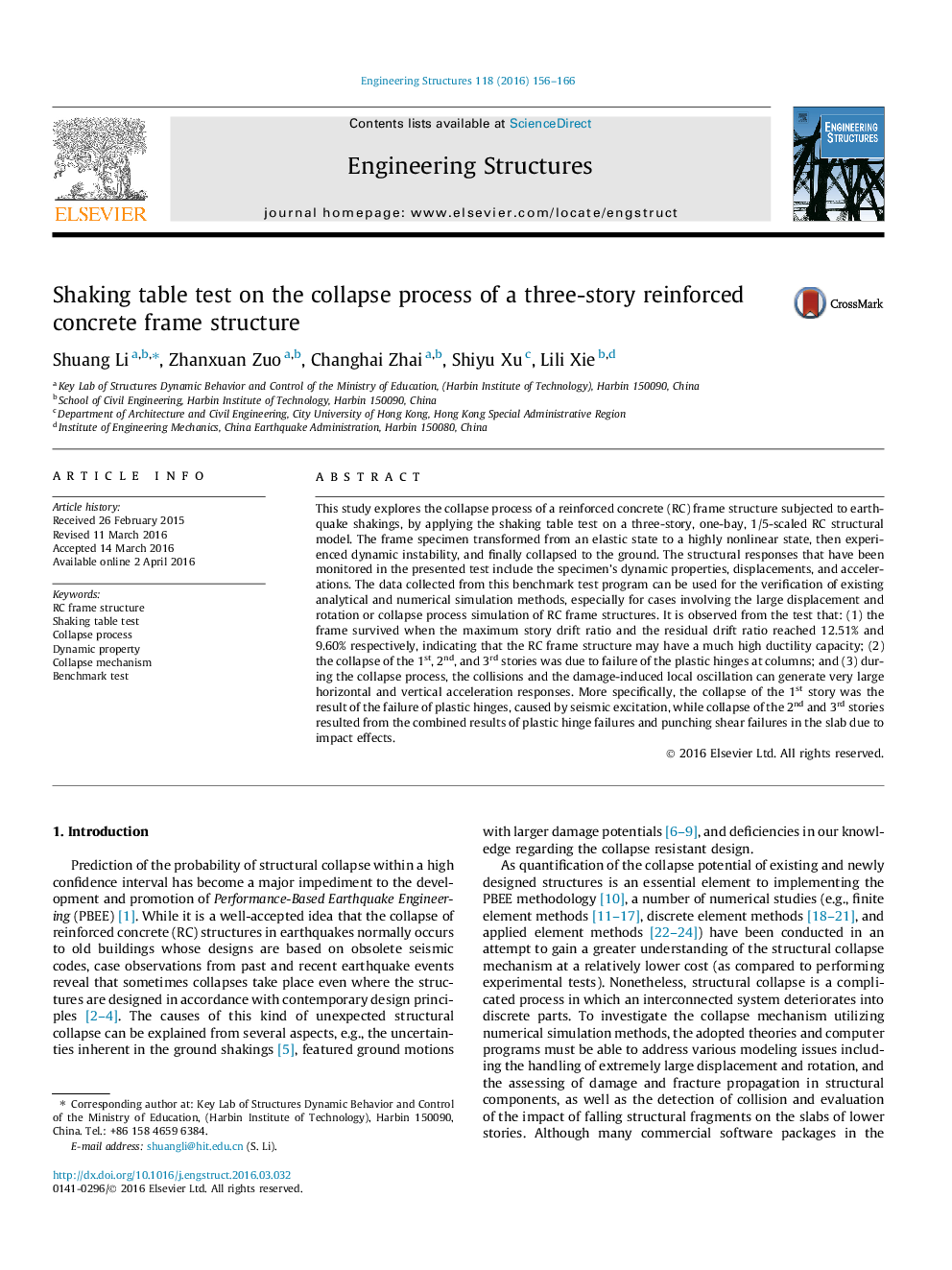| Article ID | Journal | Published Year | Pages | File Type |
|---|---|---|---|---|
| 265730 | Engineering Structures | 2016 | 11 Pages |
•We conducted a complete collapse shaking table test on a RC frame structure.•Provides valuable test data to verify analytical and/or numerical collapse studies.•Binocular stereo vision technique was utilized to record the displacement responses.•Collapse is induced by both the plastic hinges and punching damage in slabs.•High-frequency acceleration in near collapse stage is useful in collapse detection.
This study explores the collapse process of a reinforced concrete (RC) frame structure subjected to earthquake shakings, by applying the shaking table test on a three-story, one-bay, 1/5-scaled RC structural model. The frame specimen transformed from an elastic state to a highly nonlinear state, then experienced dynamic instability, and finally collapsed to the ground. The structural responses that have been monitored in the presented test include the specimen’s dynamic properties, displacements, and accelerations. The data collected from this benchmark test program can be used for the verification of existing analytical and numerical simulation methods, especially for cases involving the large displacement and rotation or collapse process simulation of RC frame structures. It is observed from the test that: (1) the frame survived when the maximum story drift ratio and the residual drift ratio reached 12.51% and 9.60% respectively, indicating that the RC frame structure may have a much high ductility capacity; (2) the collapse of the 1st, 2nd, and 3rd stories was due to failure of the plastic hinges at columns; and (3) during the collapse process, the collisions and the damage-induced local oscillation can generate very large horizontal and vertical acceleration responses. More specifically, the collapse of the 1st story was the result of the failure of plastic hinges, caused by seismic excitation, while collapse of the 2nd and 3rd stories resulted from the combined results of plastic hinge failures and punching shear failures in the slab due to impact effects.
